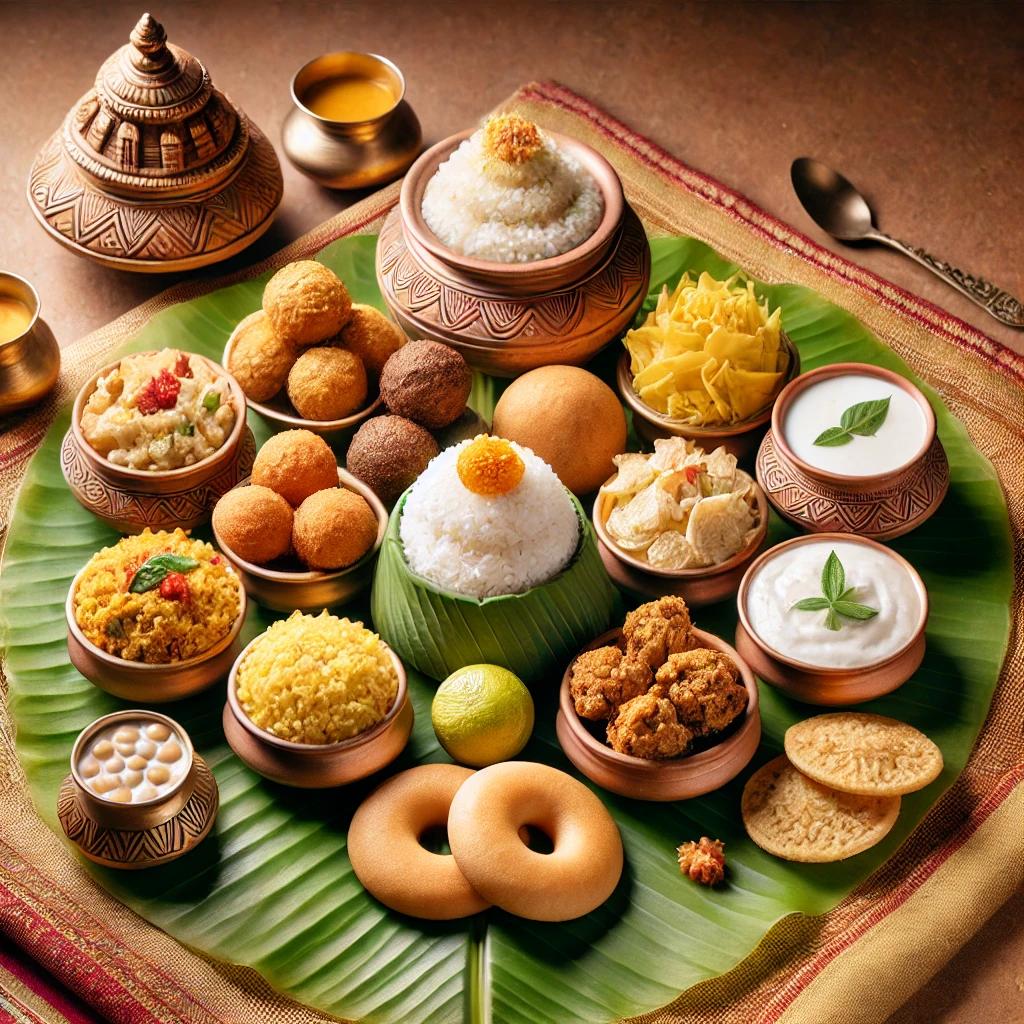
When visiting the Tirupati Balaji Temple, one of the most revered pilgrimage sites in India, the experience is not complete without indulging in its sacred prasadam. This holy offering is not merely food; it embodies the blessings of Lord Venkateswara and carries profound spiritual significance. Each prasadam serves as a reminder of faith, devotion, and the rich culinary traditions of South India.
In this blog, we will delve into the various types of prasadam available at the Tirupati temple, their unique preparation methods, and the spiritual importance behind these divine delicacies.
1. Tirupati Laddu: The Signature Offering
Tirupati Laddu is undoubtedly the star of all prasadam offerings. Known for its unique taste and texture, this laddu has become synonymous with the Tirupati temple experience.
- Historical Background: The preparation of laddus dates back several centuries and has been perfected over generations.
- Ingredients and Preparation: Made from besan (gram flour), sugar, ghee, cashews, and cardamom, the laddus are prepared in large quantities daily in a dedicated kitchen. Each laddu is offered to the deity before being distributed to the devotees, infusing it with divine blessings.
- Cultural Significance: Receiving a laddu is considered an auspicious blessing, believed to bring prosperity and good fortune to the devotee.
2. Pulihora: The Tangy Rice Delight
Pulihora, also known as Tamarind Rice, is a popular prasadam that tantalizes the taste buds with its tangy flavor.
- Flavor Profile: This dish offers a delightful combination of sourness and spice, making it a unique offering that complements the sweetness of laddu.
- Ingredients: Made with rice, tamarind paste, turmeric, and spices like mustard seeds and curry leaves, Pulihora is both flavorful and nutritious.
- Symbolic Meaning: It represents the ups and downs of life, reminding devotees of the need for balance in their spiritual journey.
3. Curd Rice: A Soothing Offering
After a long day of worship and rituals, Curd Rice is the perfect prasadam to cool down and refresh.
- Culinary Features: This dish is known for its creamy texture and soothing taste, often garnished with mustard seeds, curry leaves, and sometimes even pomegranate seeds for a burst of flavor.
- Health Benefits: Curd rice is a light meal, rich in probiotics, making it an excellent choice for digestion after a day of fasting.
- Cultural Importance: It symbolizes peace and harmony, making it a fitting offering in the spiritual atmosphere of Tirupati.
4. Pongal: The Festive Rice Dish
Pongal is a traditional South Indian dish prepared during festive occasions and special rituals at the temple.
- Flavor and Texture: This sweet dish, made from rice, jaggery, milk, and flavored with cardamom, has a unique sweetness that resonates with devotees.
- Festive Significance: It is particularly offered during festivals, representing abundance and prosperity in life.
- Preparation: The dish is prepared with care, ensuring it captures the essence of celebration and gratitude.
5. The Ritual of Vada and Appam
During special religious ceremonies and festivals, Vada and Appam are offered as part of the prasadam collection.
- Vada: This savory lentil-based snack is crispy on the outside and soft on the inside, providing a delicious contrast to the sweeter offerings.
- Appam: These fluffy rice pancakes are often served with sweetened coconut milk, making them a delightful treat.
- Culinary Experience: Both dishes are prepared with meticulous care, embodying the rich culinary heritage of the region.
6. Payasam: A Sweet Finale
The final offering that often concludes a meal is Payasam, a traditional South Indian dessert.
- Ingredients: Made from rice or vermicelli cooked in milk and sweetened with sugar or jaggery, this dish is often garnished with nuts and raisins.
- Symbol of Celebration: Payasam is typically offered during festivals and is associated with auspicious occasions.
- Cultural Significance: It embodies sweetness and joy, marking the celebration of divine blessings.
The Prasadam Preparation Process
The preparation of prasadam at Tirupati is a sacred ritual that reflects the spiritual dedication of the temple authorities.
- Hygienic Practices: The Potu (kitchen) operates under strict hygiene standards, ensuring that every offering is clean and safe for consumption.
- Traditional Methods: While modern equipment is used, the essence of traditional cooking methods is preserved to maintain authenticity.
- Divine Offering: Before serving, all prasadam is offered to Lord Venkateswara, instilling each item with blessings for the devotees.
Experiencing Prasadam During Your Visit
To fully enjoy the divine prasadam during your pilgrimage to Tirupati:
- Visit the Prasadam Counters: Designated counters around the temple make it easy for devotees to collect prasadam after Darshan.
- Book Through Tirupati Balaji Package: For a hassle-free experience, consider booking with Tirupati Balaji Package. Enjoy VIP Darshan, skip the long queues, and savor the prasadam offerings without stress.
- Festival Seasons: Visiting during festivals provides a unique opportunity to taste special prasadam varieties made exclusively for those occasions.
Conclusion
Tirupati prasadam is a culinary expression of spirituality, tradition, and culture. Each dish, from the iconic Tirupati Laddu to the soothing Curd Rice, plays a vital role in the overall experience of visiting this sacred temple. To make your pilgrimage memorable, book your travel with Tirupati Balaji Package and indulge in the divine flavors that await you. Immerse yourself in the spiritual journey and relish the sacred offerings that reflect the blessings of Lord Venkateswara.







